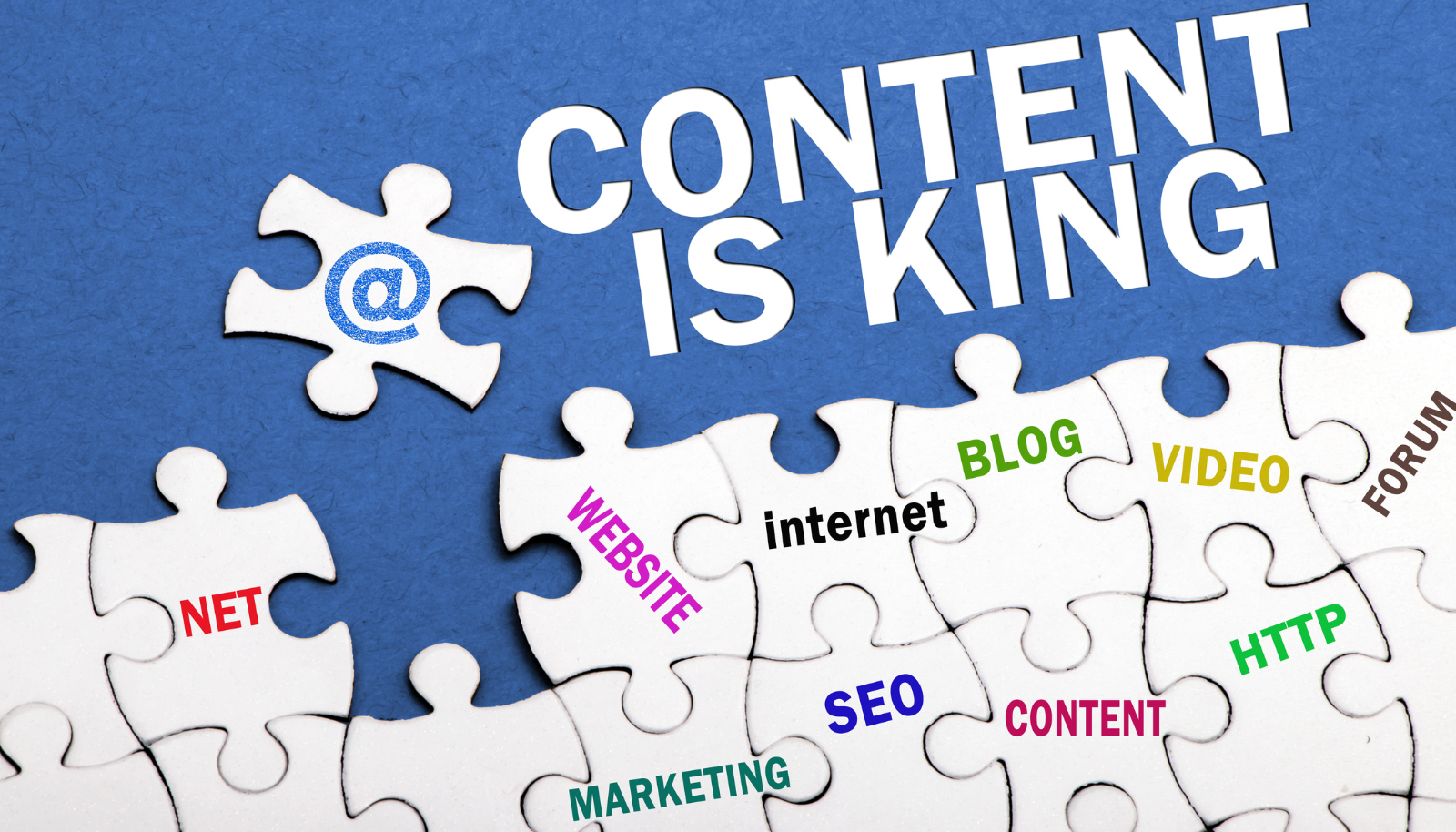Harnessing the Power of Content Marketing
In the fast-paced world of digital marketing, standing out from the crowd is more challenging than ever. Content marketing has emerged as a powerful tool to not only capture the attention of potential customers but also to foster meaningful engagement. By crafting content that is both valuable and relevant, businesses can build trust with their audience, driving deeper connections and loyalty. This blog will delve into how you can leverage content marketing to boost engagement and, ultimately, sales.
From blog posts and social media updates to videos and infographics, the types of content you can create are virtually limitless. However, the key lies in understanding your audience's needs and preferences. We'll explore various strategies and tips to help you create content that resonates with your target market, encourages interaction, and inspires action. Get ready to transform your content marketing efforts and watch your business thrive.

Decoding Your Crowd: The Art of Knowing Who You're Talking To
Before creating content, it's essential to have a deep understanding of your audience. Knowing who they are, what they care about, and how they consume information will help you tailor your content to meet their needs effectively. Here are some key steps to understanding your audience:
- Create Buyer Personas: Develop detailed profiles of your ideal customers. Include information such as demographics, interests, pain points, and online behavior. This will help you visualize your audience and create content that speaks directly to them.
- Conduct Audience Research: Use surveys, interviews, and social media analytics to gather insights about your audience's preferences and challenges. Tools like Google Analytics and social media platforms' built-in analytics can provide valuable data.
- Monitor Competitors: Look at what your competitors are doing. What type of content are they producing, and how is their audience responding? This can give you ideas for your content strategy and highlight gaps you can fill.
Once you have a clear picture of your audience, you can start creating content that resonates with them. Remember, the goal is to provide value and address their needs, positioning your brand as a trusted resource.

Crafting Compelling Content
With a clear understanding of your audience, the next step is to create content that captures their interest and drives engagement. Here are some strategies to help you craft compelling content:
- Tell a Story: People love stories. Use storytelling techniques to make your content more engaging and relatable. Share anecdotes, case studies, or customer testimonials that illustrate your points and connect with your audience emotionally.
- Focus on Quality Over Quantity: It's better to produce fewer pieces of high-quality content than to churn out numerous low-quality posts. Ensure your content is well-researched, well-written, and provides real value to your readers.
- Use Visuals: Incorporate images, infographics, and videos to make your content more visually appealing. Visual content is more likely to be shared and remembered, helping to increase your reach and impact.
- Optimize for SEO: Use relevant keywords naturally within your content to improve its visibility in search engine results. This will help attract organic traffic to your site and increase your content's reach.
- Provide Actionable Insights: Make sure your content offers practical advice that your audience can apply. Whether it's a step-by-step guide, tips, or checklists, actionable content is more likely to be shared and appreciated.
By focusing on these strategies, you can create content that not only engages your audience but also drives them to take action, ultimately boosting your sales.

Leveraging Different Content Formats
To maximize your content marketing efforts, it's crucial to diversify the types of content you create. Different formats can reach various segments of your audience and keep your content fresh and engaging. Here are some popular content formats to consider:
- Blog Posts: These are great for sharing in-depth information, insights, and tips. Blog posts can help establish your authority in your industry and improve your site's SEO.
- Videos: Video content is highly engaging and can convey complex information in an easily digestible format. Use videos for tutorials, product demonstrations, customer testimonials, and behind-the-scenes looks.
- Infographics: Infographics are a visually appealing way to present data and statistics. They can simplify complex information and are highly shareable on social media.
- Podcasts: Podcasts are a growing medium that allows you to reach audiences who prefer audio content. They are excellent for interviews, industry news, and in-depth discussions.
- Ebooks and Whitepapers: These longer-form content pieces are perfect for providing detailed information on a specific topic. They can be used to generate leads by offering them in exchange for contact information.
- Social Media Posts: Short, engaging posts on platforms like Facebook, Instagram, Twitter, and LinkedIn can help you reach a broader audience and drive traffic to your site.
- Email Newsletters: Regular newsletters can keep your audience informed about new content, products, and company updates. They are a great tool for nurturing leads and maintaining customer relationships.
By leveraging a variety of content formats, you can keep your audience engaged and cater to different preferences, ultimately driving more engagement and sales.

Distributing Your Content Effectively
Creating great content is just the beginning; distributing it effectively is crucial to ensure it reaches and engages your target audience. Here are some strategies to help you distribute your content effectively:
- Utilize Social Media: Share your content on various social media platforms where your audience is active. Tailor your posts to fit the style and format of each platform to maximize engagement. Utilize hashtags, tagging, and sharing features to increase your reach.
- Leverage Email Marketing: Send your content directly to your subscribers through email newsletters. Segment your email list to target specific groups with relevant content. Personalize your emails to improve open and click-through rates.
- Collaborate with Influencers: Partner with influencers in your industry to promote your content. Influencers can help you reach a broader audience and add credibility to your brand. Choose influencers whose values align with your brand and who have an engaged following.
- Guest Posting: Write guest posts for reputable blogs and websites in your industry. This can help you reach a new audience and drive traffic back to your site. Ensure your guest posts provide value and are aligned with the host site's content.
- Use Paid Advertising: Invest in paid advertising to boost your content's visibility. Platforms like Google Ads, Facebook Ads, and LinkedIn Ads allow you to target specific demographics and increase your content's reach.
- Engage in Online Communities: Participate in forums, discussion groups, and online communities related to your industry. Share your content when relevant and engage with users to build relationships and drive traffic to your site.
- Repurpose Content: Repurpose your existing content into different formats to extend its reach. For example, turn a blog post into an infographic, a video, or a series of social media posts. This allows you to reach different segments of your audience with the same core message.
By implementing these distribution strategies, you can ensure that your content reaches the right people, at the right time, and in the right place, driving engagement and increasing sales.

Measuring and Analyzing Performance
To ensure your content marketing efforts are effective, it's essential to measure and analyze their performance. This allows you to understand what's working, what isn't, and how you can improve. Here are key steps to measuring and analyzing your content marketing performance:
- Set Clear Goals: Define what you want to achieve with your content marketing. Whether it's increasing website traffic, generating leads, or boosting sales, having clear goals will guide your measurement efforts.
- Track Key Metrics: Identify the metrics that align with your goals. Common metrics include website traffic, social media engagement, email open rates, click-through rates, and conversion rates. Tools like Google Analytics, social media analytics, and email marketing platforms can provide valuable data.
- Analyze Audience Engagement: Look at how your audience interacts with your content. Which pieces are getting the most views, likes, shares, and comments? Understanding engagement can help you identify what resonates with your audience.
- Assess Conversion Rates: Determine how well your content is driving conversions. Track how many visitors are taking the desired action, such as signing up for a newsletter, downloading an ebook, or making a purchase. This will help you gauge the effectiveness of your content in achieving your business goals.
- Gather Feedback: Solicit feedback from your audience through surveys, comments, and direct interactions. This qualitative data can provide insights into their preferences and how you can improve your content.
- Adjust and Optimize: Use the insights gained from your analysis to refine your content strategy. Focus on creating more of the content that performs well and consider revising or eliminating content that doesn't meet your goals. Continuously test different approaches to see what yields the best results.
By consistently measuring and analyzing your content marketing performance, you can make data-driven decisions that enhance your strategy and drive better results.

Adapting to Trends and Changes
The digital marketing landscape is constantly evolving, and staying ahead of trends is crucial for maintaining the effectiveness of your content marketing strategy. Here’s how you can adapt to trends and changes:
- Stay Informed: Regularly read industry blogs, attend webinars, and follow thought leaders to keep up with the latest trends and developments in content marketing. This will help you anticipate changes and adapt your strategy accordingly.
- Embrace New Technologies: Leverage emerging technologies like artificial intelligence, chatbots, and virtual reality to enhance your content marketing efforts. These technologies can help you create more personalized and engaging content.
- Experiment with New Formats: Don’t be afraid to try new content formats and platforms. For example, if short-form videos are trending, consider creating TikTok or Instagram Reels to reach a younger audience. Experimentation can help you discover new ways to engage your audience.
- Monitor Competitors: Keep an eye on what your competitors are doing. Analyze their content strategies and see if there are any successful tactics you can incorporate into your own strategy. This can help you stay competitive and innovative.
- Listen to Your Audience: Pay attention to feedback and comments from your audience. Their preferences and behaviors can change over time, and staying attuned to their needs will help you adapt your content to remain relevant and engaging.
- Review and Revise: Regularly review your content marketing strategy and performance. Be prepared to make adjustments based on what’s working and what’s not. Flexibility and responsiveness are key to staying ahead in a dynamic environment.
By staying informed and adaptable, you can ensure that your content marketing strategy remains effective and continues to drive engagement and sales in a constantly changing landscape.

Maximizing the Impact of Content Marketing
Content marketing is a powerful tool for driving engagement and sales, but it requires a strategic and dynamic approach. By understanding your audience, crafting compelling content, leveraging various formats, distributing effectively, measuring performance, and staying adaptable, you can maximize the impact of your content marketing efforts.
The journey to successful content marketing is ongoing. It involves continuous learning, experimenting, and refining your strategies to stay ahead of trends and meet your audience’s evolving needs. When done right, content marketing can not only boost your brand’s visibility and credibility but also build lasting relationships with your customers, driving long-term business growth.















Leave a Comment - (Links Acceptable)